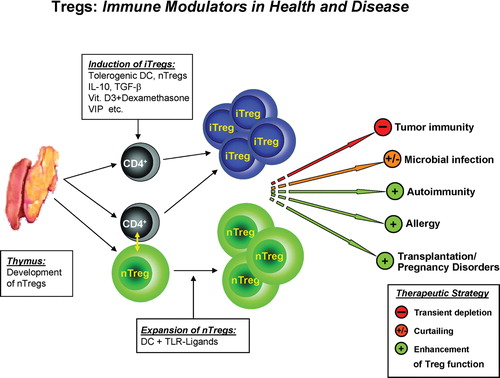Figures & data
Table I. Characteristics of naturally occurring (nTregs) and induced T regulatory cells (iTregs).
Figure 1. Tregs—immune modulators in health and disease. Naturally occurring CD4+CD25+ Tregs (nTregs) develop directly from CD4+ T cell precursors during positive selection in the thymus. Induced Tregs (iTregs) develop from naïve conventional CD4+ T cells either as a result of cell contact‐dependent interaction with nTregs or under the influence of suppressive agents like IL‐10, TGF‐β, dexamethasone, vitamin D3, vasoactive intestinal peptide, tolerogenic DC, and potentially other inhibitory mechanisms. Modulation of Treg (nTregs/iTregs) function is a promising intervention strategy to either improve responses in tumor and microbial diseases or suppress those unwanted in autoimmunity, allergy, transplantation, and pregnancy disorders. The transient depletion of Tregs as well as their manipulation, especially via toll‐like receptor (TLR) ligands, allow a transient reduction of Treg activity and enforce antitumor responses and immunity against viral infections. On the other hand their selective activation could diminish chronic pathological immune and autoimmune responses.
